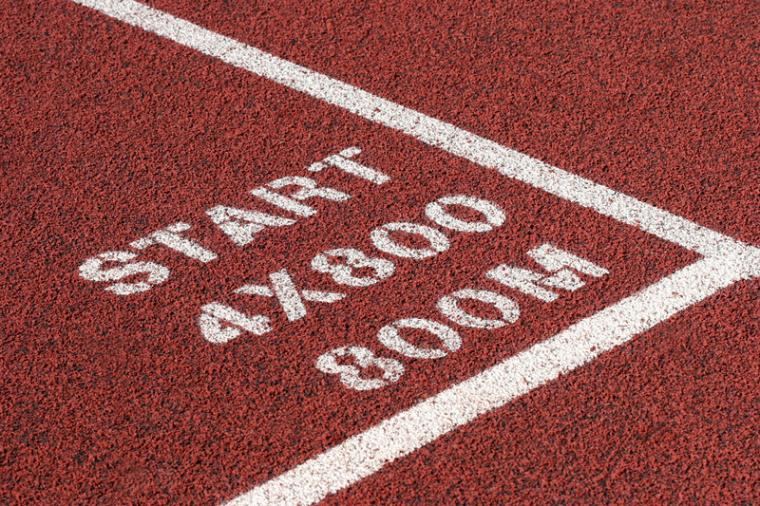

At long last, we have a decision regarding spectators at the Olympics in July. Here, closer to home, the trials for the USA’s team for one of the “big five” sports (meaning one of the most-watched on TV) will have an audience. And just as in Tokyo, spectator attendance will be capped.
A limited number of spectators will be able to attend the U.S. Olympic Track and Field Team Trials at recently renovated $270 million Hayward Field in Eugene, Oregon. The announcement came three weeks before the event as scheduled to commence on June 18 and run through June 27.
“Oregon health regulations regarding stadium capacity have shifted significantly in the last two weeks,” said Michael Reilly, CEO of TrackTown USA — the local organizing committee for the trials — said in a May 29 statement. “We are absolutely thrilled as these changes allow for previously impossible spectator numbers. Alongside our partners, we have developed a plan to maximize attendance while keeping participants and our community safe.”
Those plans include seating sections for vaccinated and unvaccinated fans. Ticket holders must provide proof of full COVID-19 vaccination in order to sit in a vaccinated-only section.
TrackTown USA officials in late April announced plans to refund all current ticket holders, citing the need to limit seating within the stadium. In light of the latest update allowing for greater seating availability, a new ticketing plan emerged.
All fans who retained their ticket orders through April 2021 were able to keep their tickets if they liked. Seating locations, however, were subject to change due to mandatory adaptations of the seating map in order to comply with health regulations. After existing ticket holders and athlete families were accommodated, any remaining ticket inventory was made available to the public. All new tickets are mobile only.
Additionally, TrackTown USA said all ticketholders preferring to receive a refund would be accommodated.
Other team trials taking place this month include swimming over two weekends (June 4-7 and June 13-20 in Omaha, Neb.) and gymnastics (June 24-27 in St. Louis). Spectators were allowed at those events.
Capacity at the swimming trials in CHI Health Arena, which typically seats about 14,000 fans, was capped at about 50 percent, according to Swimming World.Because approximately 90 percent of all available tickets had been sold for the postponed June 2020 trials, a complete refund and re-sale process began in April. All spectators were “strongly encouraged to be fully vaccinated prior to attending the trials and/or receive a negative COVID-19 PCR test within three days of attending the trials,” according to the event’s “COVID-19 Mitigation Plan.”They also are “strongly encouraged to wear masks/face coverings at all times while in the venue.”
In St. Louis, the gymnastics trials were moved from sold-out 19,000-seat Enterprise Center to The Dome at America’s Center, which has a seating capacity of 67,000. With this move, USA Gymnastics says, the U.S. Olympic Team Trials will be held alongside the USA Gymnastics Championships, which serves as the annual national championships for the acrobatic, rhythmic, and trampoline and tumbling disciplines, as well as the final Olympic selection event for rhythmic and trampoline in 2021. The 2021 National Congress and Trade Show also will be held as planned at the America’s Center Convention Complex.
Because of the reduced capacity and venue change, tickets previously purchased for U.S. Olympic Team Trials at the Enterprise Center cannot be fulfilled as planned, and all previous ticketholders still wishing to attend the trials were offered the opportunity to re-purchase tickets for seats in The Dome. The venue switch also bumped up by one day the beginning of competition.
As of this writing, the Summer Games in Tokyo were still slated to take place July 23-Aug. 8 — although several organizations have called for their cancelation amidst reports from Japanese scientists that the Olympics could act as a coronavirus superspreader event. As Science magazine reports, “Japan and [the International Olympic Committee] have already barred tourists from entering Japan to watch the games in person. But millions of people in Japan could attend competitions at more than 40 venues in and around Tokyo.”
National Public Radio reports, approximately 11,500 athletes are expected to travel to Japan to compete, and an estimated 79,000 journalists, officials and staff will be there, too. At least one contingent of athletes — Australia’s softball team — arrived in Tokyo seven weeks ahead of time and are undergoing daily PCR tests for COVID-19, are relegated to one elevator in their hotel, eat in their own dining room and work out in limited numbers, according to The New York Times. They also are not allowed in local bars, restaurants and shrines, but they are granted access to a hotel meeting room equipped with a Nintendo Switch.
“We’re the guinea pigs at this point,” Tahli Moore, who plays second base and outfield for the Australia National Team, told the newspaper. “We’re showing it’s possible, and we’re showing it’s really safe.”

